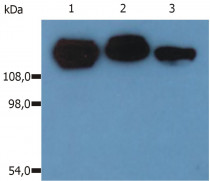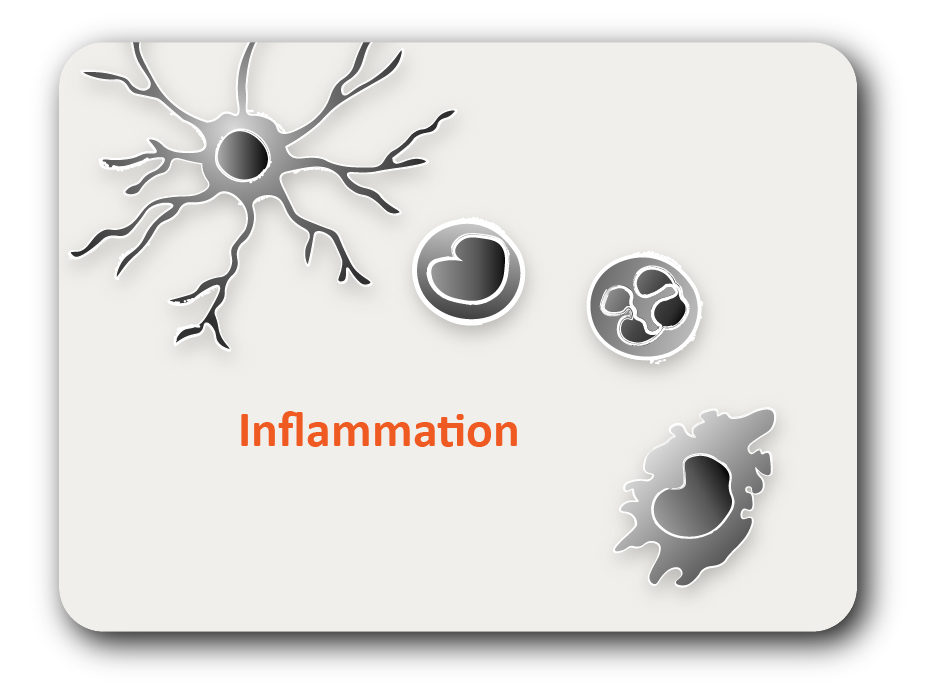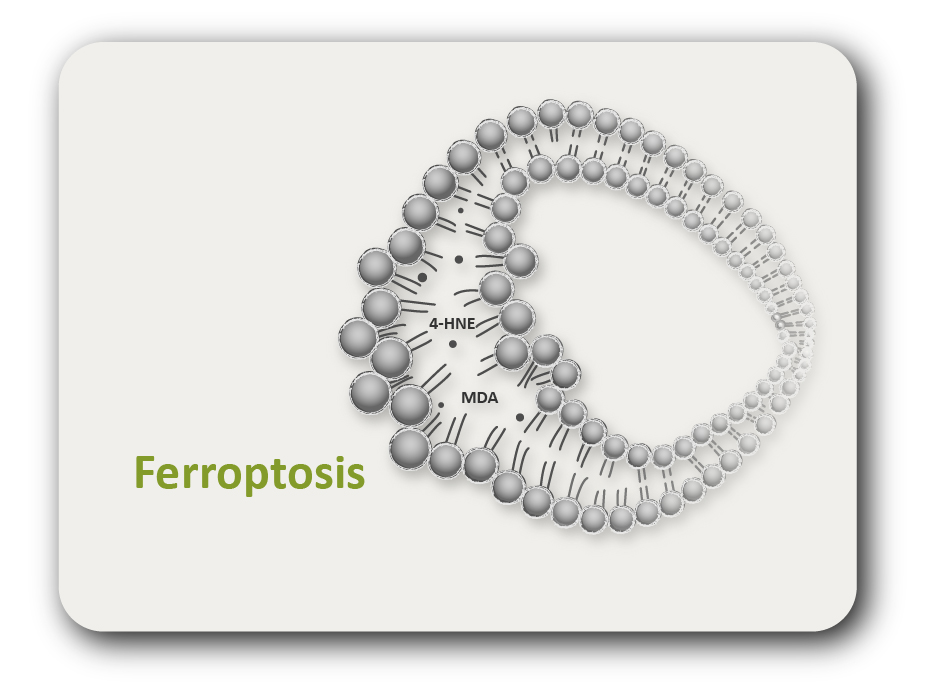ARG62798
anti-CD29 / Integrin beta 1 antibody [MEM-101A]
anti-CD29 / Integrin beta 1 antibody [MEM-101A] for Flow cytometry,Immunoprecipitation,Western blot and Human,Dog,Pig
Developmental Biology antibody; Microbiology and Infectious Disease antibody; Neuroscience antibody; Signaling Transduction antibody
概述
| 产品描述 | Mouse Monoclonal antibody [MEM-101A] recognizes CD29 / Integrin beta 1 |
|---|---|
| 反应物种 | Hu, Dog, Pig |
| 不反应物种 | Ms |
| 应用 | FACS, IP, WB |
| 特异性 | The clone MEM-101A reacts with CD29 (integrin beta1 chain), a 130 kDa single chain type I glycoprotein expressed as a heterodimer (non-covalently associated with the integrin alpha subunits 1-6). CD29 is broadly expressed on majority of hematopoietic and non-hematopoietic cells (leukocytes, platelets, fibroblasts, endothelial cells, epithelial cells and mast cells). HLDA VI; WS Code AS A048 |
| 宿主 | Mouse |
| 克隆 | Monoclonal |
| 克隆号 | MEM-101A |
| 同位型 | IgG1 |
| 靶点名称 | CD29 / Integrin beta 1 |
| 抗原物种 | Human |
| 抗原 | Raji Burkitt's lymphoma cell line |
| 偶联标记 | Un-conjugated |
| 別名 | CD29; Glycoprotein IIa; Fibronectin receptor subunit beta; VLAB; MSK12; CD antigen CD29; FNRB; GPIIA; VLA-4 subunit beta; VLA-BETA; MDF2; Integrin beta-1 |
应用说明
| 应用建议 |
|
||||||||
|---|---|---|---|---|---|---|---|---|---|
| 应用说明 | WB: Sample preparation: Buffer with laurylmaltoside, 2x non-reducing SDS Application note: Non-reducing condition. SDS-PAGE (6% separating gel, 4% stacking gel). Recommended secondary antibody - anti mouse IgG/HRP, dilution 1:2000, 60 min on vertical incubator. * The dilutions indicate recommended starting dilutions and the optimal dilutions or concentrations should be determined by the scientist. |
||||||||
| 阳性对照 | WB: Jurkat and Kg-1a |
属性
| 形式 | Liquid |
|---|---|
| 纯化 | Purified from ascites by protein-A affinity chromatography. |
| 纯度 | > 95% (by SDS-PAGE) |
| 缓冲液 | PBS (pH 7.4) and 15 mM Sodium azide |
| 抗菌剂 | 15 mM Sodium azide |
| 浓度 | 1 mg/ml |
| 存放说明 | For continuous use, store undiluted antibody at 2-8°C for up to a week. For long-term storage, aliquot and store at -20°C or below. Storage in frost free freezers is not recommended. Avoid repeated freeze/thaw cycles. Suggest spin the vial prior to opening. The antibody solution should be gently mixed before use. |
| 注意事项 | For laboratory research only, not for drug, diagnostic or other use. |
生物信息
| 数据库连接 | |
|---|---|
| 基因名称 | ITGB1 |
| 全名 | integrin, beta 1 (fibronectin receptor, beta polypeptide, antigen CD29 includes MDF2, MSK12) |
| 背景介绍 | CD29 (beta1 integrin subunit, GPIIa) forms non-covalently linked heterodimers with at least 6 different alpha chains (alpha1-alpha6, CD49a-f) determining the binding properties of beta1 (VLA) integrins. These integrins mediate cell adhesion to collagen, fibronectin, laminin and other extracellular matrix (ECM) components. This interaction hinders cell death, whereas disruption of anchorage to ECM leads to apoptosis. Decreased expression of most beta1 integrins correlates with acquiring multidrug resistance of tumour cells during selection in presence of antitumour drug. In platelets, translocation of intracellular pool of beta1 integrins to the plasma membrane following thrombin stimulation. These integrins are also up-regulated in leukocytes during emigration and extravascular migration and appear to be critically involved in regulating the immune cell trafficking from blood to tissue, as well as in regulating tissue damage and disease symptoms related to inflammatory bowel disease. Through a beta1 integrin-dependent mechanism, fibronectin and type I collagen enhance cytokine secretion of human airway smooth muscle in response to IL-1beta. |
| 生物功能 | Integrins alpha-1/beta-1, alpha-2/beta-1, alpha-10/beta-1 and alpha-11/beta-1 are receptors for collagen. Integrins alpha-1/beta-1 and alpha-2/beta-2 recognize the proline-hydroxylated sequence G-F-P-G-E-R in collagen. Integrins alpha-2/beta-1, alpha-3/beta-1, alpha-4/beta-1, alpha-5/beta-1, alpha-8/beta-1, alpha-10/beta-1, alpha-11/beta-1 and alpha-V/beta-1 are receptors for fibronectin. Alpha-4/beta-1 recognizes one or more domains within the alternatively spliced CS-1 and CS-5 regions of fibronectin. Integrin alpha-5/beta-1 is a receptor for fibrinogen. Integrin alpha-1/beta-1, alpha-2/beta-1, alpha-6/beta-1 and alpha-7/beta-1 are receptors for lamimin. Integrin alpha-4/beta-1 is a receptor for VCAM1. It recognizes the sequence Q-I-D-S in VCAM1. Integrin alpha-9/beta-1 is a receptor for VCAM1, cytotactin and osteopontin. It recognizes the sequence A-E-I-D-G-I-E-L in cytotactin. Integrin alpha-3/beta-1 is a receptor for epiligrin, thrombospondin and CSPG4. Alpha-3/beta-1 may mediate with LGALS3 the stimulation by CSPG4 of endothelial cells migration. Integrin alpha-V/beta-1 is a receptor for vitronectin. Beta-1 integrins recognize the sequence R-G-D in a wide array of ligands. Isoform 2 interferes with isoform 1 resulting in a dominant negative effect on cell adhesion and migration (in vitro). In case of HIV-1 infection, the interaction with extracellular viral Tat protein seems to enhance angiogenesis in Kaposi's sarcoma lesions. When associated with alpha-7/beta-1 integrin, regulates cell adhesion and laminin matrix deposition. Involved in promoting endothelial cell motility and angiogenesis. Involved in osteoblast compaction through the fibronectin fibrillogenesis cell-mediated matrix assembly process and the formation of mineralized bone nodules. May be involved in up-regulation of the activity of kinases such as PKC via binding to KRT1. Together with KRT1 and GNB2L1/RACK1, serves as a platform for SRC activation or inactivation. Plays a mechanistic adhesive role during telophase, required for the successful completion of cytokinesis. Integrin alpha-3/beta-1 provides a docking site for FAP (seprase) at invadopodia plasma membranes in a collagen-dependent manner and hence may participate in the adhesion, formation of invadopodia and matrix degradation processes, promoting cell invasion. Isoform 5: Isoform 5 displaces isoform 1 in striated muscles. [UniProt] |
| 研究领域 | Developmental Biology antibody; Microbiology and Infectious Disease antibody; Neuroscience antibody; Signaling Transduction antibody |
| 预测分子量 | 88 kDa |
| 翻译后修饰 | The cysteine residues are involved in intrachain disulfide bonds. |
检测图片 (1) Click the Picture to Zoom In
克隆号文献








